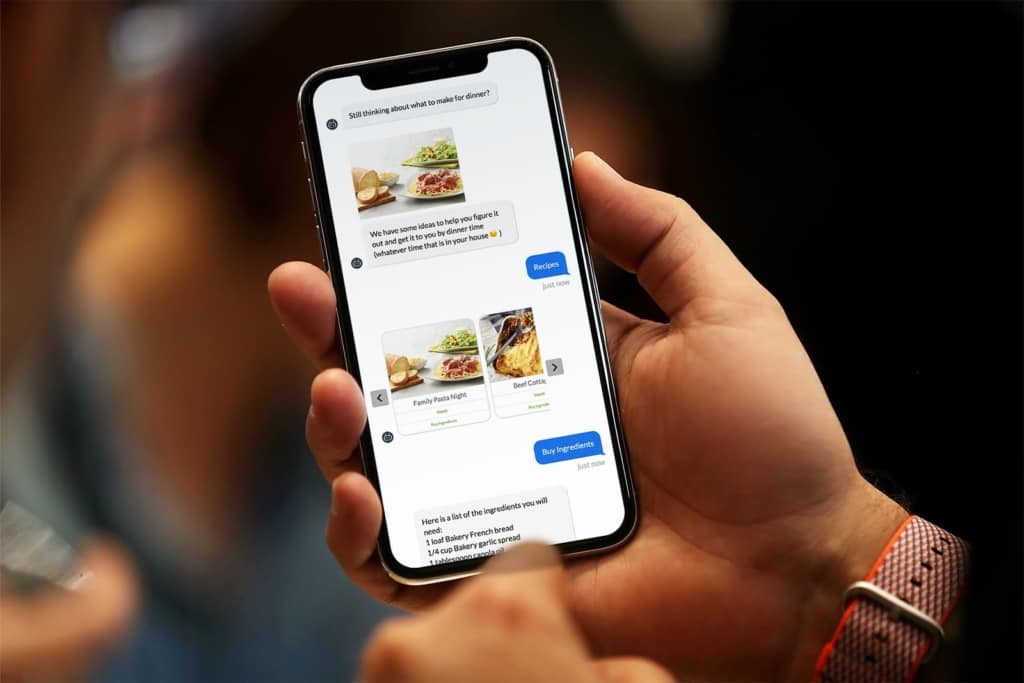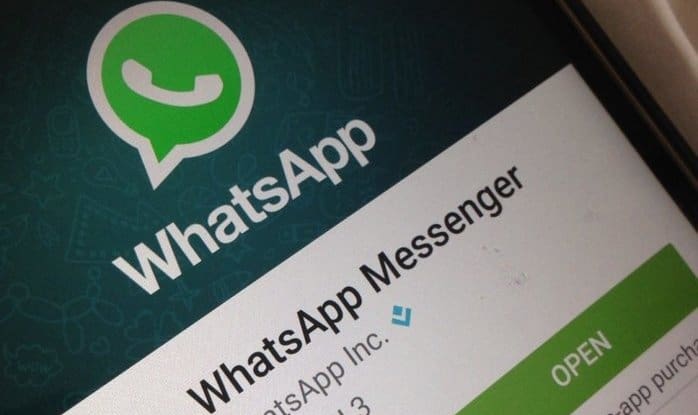
Customer focus also means using the communication channels that your target group prefers. Nowadays, messengers are increasingly part of this, and this is no longer only the case with the young target group. WhatsApp, for example, is always at hand and easy to use. Thanks to the Business API, a wide range of services and offers can be implemented.

Why messengers are so popular
Because of the COVID 19 pandemic, people have many, sometimes existential, questions to which they need quick and reliable answers. This is also why the World Health Organization WHO and the German Red Cross provide information via WhatsApp and chatbots. A modern, fast type of information and a prime example of “customer centricity” or “customer centricity”.
But even in pandemic-free times, the focus on the needs of customers is high on the list of many companies. In the post-coronavirus era, messengers can become a vital channel not only for private but also for brand communication.
WhatsApp. In the young target group of 18 to 29-year-olds, the figure is 97 percent. The Facebook subsidiary recently broke the two billion user mark worldwide.
If you want to focus more on your customers’ needs, you first have to understand that our communication has changed significantly in recent years. The smartphone, increasing bandwidths, and messaging providers such as WhatsApp, Facebook Messenger, and Co. have a large part in it.
Not even ten years ago, it was completely normal not to be reachable always and everywhere. Thanks to smartphones, there is hardly anything “offline” anymore – except in digital detox weekend seminars. And our everyday life offers messengers a whole range of advantages when it comes to staying in touch with friends, relatives or even work colleagues – whether from home or on the go.
The popularity is also quickly explained. On the one hand, messengers enable communication in real-time. On the other hand, messages can also be answered asynchronously – just when it suits you best. And: In addition to text messages, images, videos, and location information, voice messages are also possible, which are more and more taking the place of classic phone calls. Younger people increasingly perceive unannounced requests as intrusions on privacy—one reason why a telephone hotline as a service offering is increasingly ignoring the wishes of many consumers.
Consumers love on-demand offers.
Speaking of customer requests: Many users wish that films, series, and news are no longer tied to specified times. That is why direct offers are becoming less relevant. Instead, streaming services, media libraries, podcasts, and online magazines are becoming more and more popular: they enable users to consume content regardless of time and location.
This is by no means only true for young target groups. According to the ARD / ZDF online study from 2019, 28 percent of 50- to 69-year-olds are also active on streaming platforms every day. In the age group between 30 and 49 years, it is almost every second.
… also when shopping
What applies to media use continues in consumer behavior. E-commerce – even before Corona – is generating ever more significant sales.
For consumers, the advantages of brick-and-mortar retail are clear:
- Three out of four online shoppers particularly appreciate the convenience and over 68 percent independence from shop opening hours, according to the results of a survey by Pepper Media Holding in October 2019.
- This trend is also reflected in the devices used for shopping: While only 20 percent of online purchases were made using smartphones in 2014, the value is over 50 percent just five years later.
- According to an extensive Facebook study, for 58 percent of consumers, convenience is the most crucial factor in buying decisions and price.
… and with customer service
Companies should, therefore, rethink and not insist on traditional technologies. Just because hotlines and service emails have worked well for a long time as the first choice for customer contact does not mean that this will still be the case.
Customer focus also means being able to adapt to the changed demands of your target group flexibly. And the willingness to remain on hold for minutes is steadily decreasing. According to a survey by the market research company Nielsen, 56 percent of consumers would even expressly prefer to contact a company’s customer service via messenger message instead of picking up the phone.
The situation is similar to the email communication channel. There it sometimes takes several hours or even days for customers to get an answer to their question. Also included are frightening the results of the customer service benchmark report. The SuperOffice, a provider of CRM solutions, has published 2018th. He found that 62 percent of companies do not respond to incoming customer emails. A personal and helpful dialogue can, of course, not take place in this way.
Above all, it should be quick for today’s consumers. If you have a question, you want to get rid of it – and get an answer as soon as possible that will help.
WhatsApp in customer contact: appointments, tickets and more

It is evident that people now increasingly want the same flexibility that they are used to from communicating with friends when they are in contact with companies.
According to our Innofact survey, more than half of customers want delivery confirmations and tracking directly via messenger messages. You would also like to arrange appointments with the hairdresser, doctor, or bank advisor directly in chat. Forty-three percent would also like to receive information about delays or changes in planned flight and train connections, and 39 percent stated that they preferred customer service via WhatsApp to the traditional telephone hotline. And more than one in four would like to make ticket purchases directly, for example for means of transport or events, via Messenger.
WhatsApp is not an email replacement.
But: If you decide to include WhatsApp in your strategy as an additional communication channel, you should consider some key aspects. Under no circumstances should companies misunderstand Messenger as a one-to-one substitute for contact via email.
Both channels are subject to entirely different laws. Sending the newsletter directly via WhatsApp has also been prohibited since December 2019. Anyone who violates this will be asked to checkout. Not because WhatsApp is not suitable as a channel for communication between companies and their customers, but because the Facebook subsidiary wants to protect the interests of users by preventing mass mailing and commercial oversaturation.
Because the character of WhatsApp is based on a personal dialogue. And it is precisely this basic idea that companies should also use as an example.
Personal dialogue is required.
People want personal inspiration and personalized recommendations. Social media platforms such as Instagram and streaming services such as Netflix, Spotify, and Twitch, but also online shops like About you, are already showing how well this works: based on previously clicked posts and products, they are increasingly suggesting content to users that have been clicked you might also be interested.
Conversational Commerce: WhatsApp is always at hand

For companies, this means a development away from push to pull communication: Instead of providing their customers with information about current discounts or new collections across the board, owners of online and offline shops can use messengers such as WhatsApp to individually answer the questions of the users – and thereby become a kind of personal shopping consultant. Which summer dress fits my figure? Do you currently have my favorite protein powder in stock, or is there an alternative? And how can I make the most of the space in my new one-room apartment?
But it doesn’t just have to be about physical products. The same personal advice is, of course, also possible in other areas.
The personal dialogue allows tour operators, for example, to inspire a potential customer when they are looking for the most popular city trips or the most beautiful beaches within a three-hour flight.
On the other hand, consumers can also be helped at short notice. For example, if a passenger turns to the airline for help because their flight has been canceled, a consultant can offer suitable alternatives directly in the chat. Even as an answer, there is no need for a long-typed message, usually not possible in a stressful situation at the airport. Instead, thanks to the buttons function, a single click is enough to confirm the appropriate option. It is also possible to quickly add additional luggage if the customer is already in a taxi on the way to the airport.
He also doesn’t have to look for the right contact for long: With the WhatsApp Business API, he can use the airline’s regular landline number or a so-called click-to-WhatsApp button that can be installed directly on the website.
Take Globe Air, for example.
The success case of the private airline Globe Air, one of our customers, shows how positive customer focus can be on sales. The company’s target group, which includes many athletes, musicians, and managers, is often under enormous stress and therefore does not have the time to spend a long time spontaneously booking a flight.
For this reason, Globe Air decided to implement the WhatsApp Business API. The Messenger, as a communication channel through which they can obtain information and make flight bookings, fits perfectly into VIPs’ hectic everyday lives. While a conventional airline app quickly disappears on the third screen of the smartphone, WhatsApp is usually in use all day long.
Just a few weeks after implementing the WhatsApp Business API, the company was able to increase leads by 27 percent. The response time to incoming customer inquiries was reduced to less than a minute, and the number of last-minute flights sold rose by 20 percent.
It is worthwhile to meet the customer’s individual needs.
The brand as a guide and a good friend
Companies’ possibilities to use a messenger like WhatsApp in customer communication are already diverse and will be expanded in the future. From the service hotline’s support with questions about ordering, payment, and shipping, to transparent information about flight cancellations and track changes, to shopping inspiration, everything is possible.
However, it is essential that the channel always has to answer one fundamental question: What does my customer need, and how can I best deliver it? Depending on the product portfolio or the service offered, the answer to this question can vary widely.
The following example shows what contemporary and customer-centered communication can look like in the practice of a baby food manufacturer: Especially in the everyday life of young parents, a lot of questions arise, for example, when you should not only breastfeed but also feed your offspring. While it was completely normal a few years ago to publicly post this question on the Facebook profile of a baby food manufacturer, today, the tendency is to go back to private dialogue. With such personal items, in particular, consumers prefer the protected space to interact with companies.
Messenger like WhatsApp can offer the desired privacy and maximum comfort when answering the customer request. Young parents, in particular, have little time and leisure. You can send your question via Messenger at any time of the day and night and receive the appropriate answer – at best, even including other useful tips such as massage methods for better digestion of your baby – directly via push message on the smartphone. Here communication via WhatsApp works just as personally and uncomplicatedly as the dialogue with a good friend.
Final word
The desire of consumers for more flexible communication channels to get in touch with companies is likewise the necessary devices and technologies.
Success cases and application examples already exist, and there are hardly any limits to the creativity of companies. If the Corona crisis taught us one thing, it was the fact that we have to think more flexibly and act faster. A messenger is a perfect tool for that.
